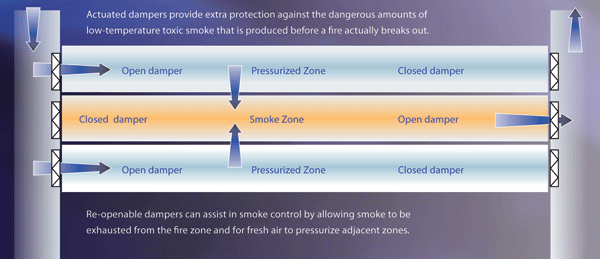Stairwell Pressurization for Smoke Control
According to the National Fire Protection Association, the process of evacuating some of today’s largest high-rise buildings may take upwards of two hours. This is by far the most compelling argument for effective smoke control in building stairwells.
Pressurized staircases keep exit routes smoke free in the event of a fire, lending precious minutes to building occupants during an evacuation. The pressures specified to keep a stairwell pressure positive vary by code. However, the universal goal is to restrain smoke but still allow the opening of doors in the stairwell shaft.

This is where stairwell pressurization control gets tricky. In the event of a fire and a subsequent evacuation there will be intermittent losses of pressure inside the stairwell as stairwell doors open. An effective pressurization system will have supply air fans with sufficient capacity to provide pressurization to prevent smoke entry when doors are open.
Damper actuators that open to pressurized stairwells are often controlled based on signals from pressure sensors. In these cases a fan pushes air into a duct running to the top of the stairwell. About every three floors there is an actuated damper. This damper modulates to maintain from .05” to .1” pressure from the stairwell with respect to the occupied spaces of the building. This control method keeps smoke from spreading as doors to the stairwell open.
Belimo actuators have been used for fire safety and smoke controls in high rise buildings throughout the world, from Mandalay Bay in Las Vegas, Nevada to The Louvre in Paris, France. To download a complete overview of Belimo fire actuation products click here.
